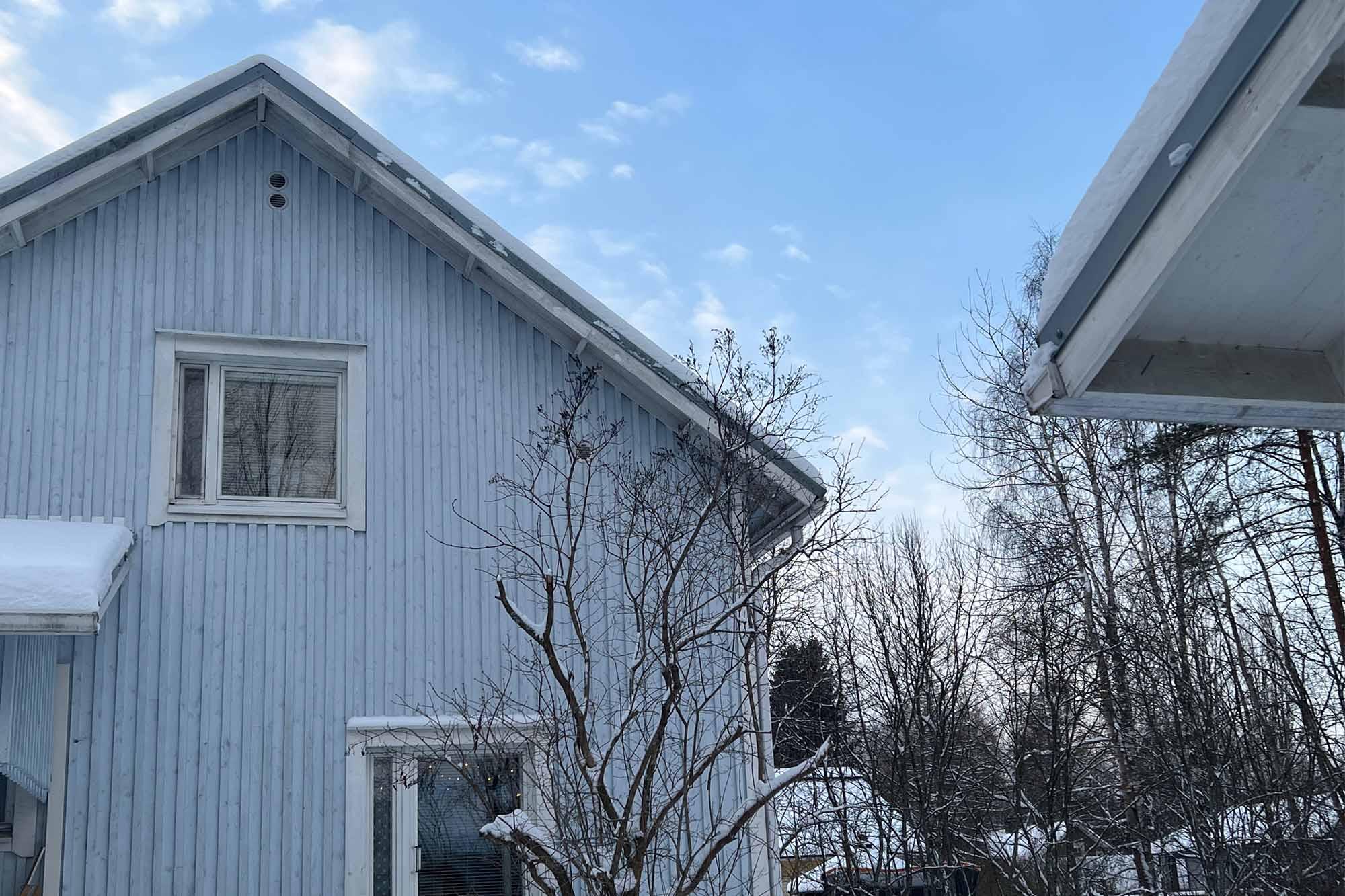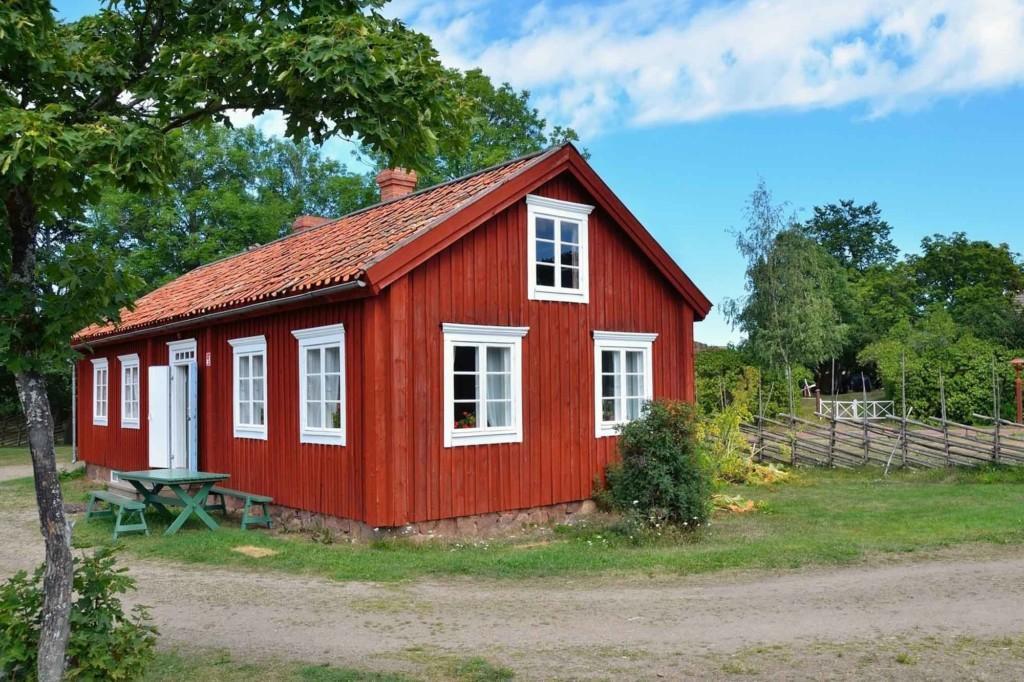An unventilated pitched roof is a typical problem in terraced houses
Pitched ceilings were built especially in the 1950s in the attics of detached houses built for the families of soldiers who fought at the battlefront of WWII. Even today, building houses with one and a half floors with a high living room or other interior space is common. This results in a pitched roof.
If non-functional, the structure poses a significant risk to the roof structures of the house and is therefore classified as a high-risk structure in the KH 90-00394 guideline for condition inspections in connection with housing transactions (Kuntotarkastus asuntokaupan yhteydessä; suoritusohje; 2007).
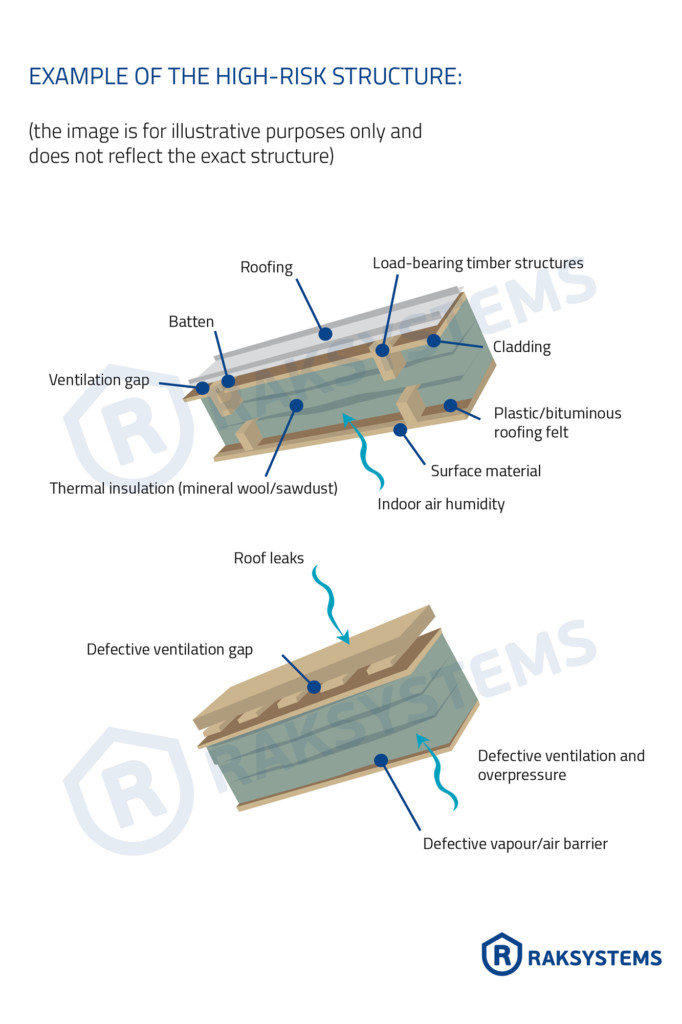
Why is a pitched ceiling a risk?
For pitched roofs to function properly, it is important that the structure is adequately ventilated and the ventilation spaces are open. In older buildings, such as houses from the 1940s and 1950s, the ventilation gap is usually only about 20 mm, which is in line with the construction method used at the time.
Such a shallow ventilation gap is insufficient if the structure also lacks a vapour barrier, or only tar paper has been used as the vapour barrier. In old structures, moisture from the indoor air can condense onto the cool structures through a thin layer of sawdust, causing damage over time. Sometimes, functional ventilation has been ruined by renovations over the years. Adding insulation to the roof, a well-meaning act, or additional construction in the attic spaces may have blocked or prevented ventilation of the pitched roof.
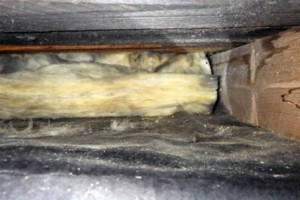
In more recent buildings, the ventilation gap is 100 mm in accordance with the modern building regulations, there is a functioning vapour barrier and the building has a modern ventilation system. Mechanical ventilation already helps to remove water vapour from the structure, mitigating the risk.
Condition of the structure should be checked at the latest when selling the house
The condition of flat and pitched roofs should be checked and the adequacy of ventilation verified if the condition is unknown or functioning of the ventilation is in doubt. The inspection should be done at the latest when selling the house, preferably at the beginning of the assignment.
The condition and functionality of the roof can have a significant impact on the value of the property being sold. The inspection should be carried out to a sufficient extent to provide an overall picture of the functionality of the structure. A mere sensory and visual assessment or studying the surfaces with a moisture sensor is not a sufficient method when studying the condition of a high-risk structure.
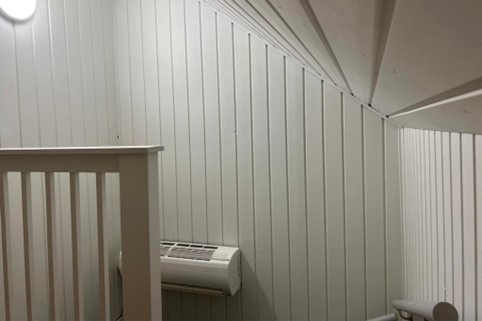
Up to 70% of pitched ceilings are in need of repairs
Condition inspections carried out by Raksystems indicate that up to 50%, or one in every two, of detached houses built in the 1940s and 1950s have an unventilated pitched roof.
Overall, an unventilated pitched roof, which has been classified as a high-risk structure, requires repairs or renovation in up to 70% of the detached houses in Finland.
Is the structure repairable? Yes, it is. If damage has already occurred, it is possible to improve the structure to make it more functional even without raising the roof.
Even with thinner insulation, it is possible to achieve good thermal insulation performance when using modern insulation materials. This will leave a sufficient ventilation gap in the repaired structure for the structure to function properly and to minimise the risk of damage.
What is a high-risk structure?
A high-risk structure refers to a type of structure which has been found in practice and based on structural surveys to be highly susceptible to damage. The structure usually complied with the building regulations and guidelines valid at the time when it was built, and the susceptibility to risk was not recognised until at a later point in time. As a result, the structure is no longer used.
Typically, damage to high-risk structures is caused by moisture entering the structure, either through the soil from the outside or from the indoor air in the form of water vapour. An example of a commonly observed high-risk structure is a false plinth.
The condition of the high-risk structure, i.e. whether the risk has been realised, should always be investigated. This is usually possible only by opening the structure.
